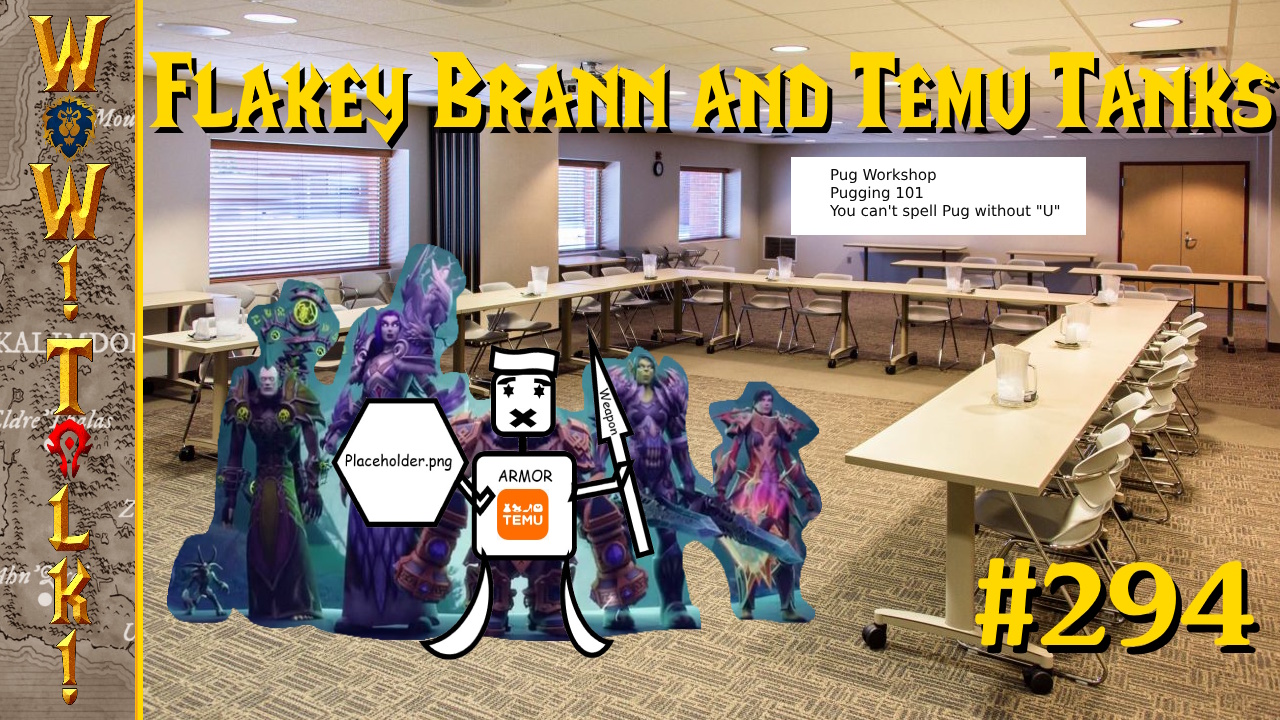
Within a half-hour of starting up Mount & Blade: With Fire and Sword (WFaS) for the first time, I fell asleep. Over the course of the following twenty hours I spent with the game this result repeated itself no less than two other times. Eventually I was able to leap this stumbling block – otherwise I wouldn’t be sitting here writing this – but only after I had dragged myself through a less than thrilling opening and familiarizing myself with WFaS‘s myriad systems and intricacies. Thus I finally found a game to play that did a fair job in keeping my attention, but only several hours into my experience. This case of lulling me to sleep is not passing damnation on WFaS as a whole, but it does illustrate an important point: With Fire and Sword can be terribly boring and not everyone will make it past the dull introduction and into the meat of the game.
WFaS is not the true third game in the Mount & Blade series, despite appearances. Instead it is an expansion for the original Mount & Blade game with the North American release carrying some improvements taken from Mount & Blade: Warband. The improvements consist of updating Mount & Blade to the Warband engine, the inclusion of multiplayer, and of course the addition of firearms and grenades to the new post-medieval timeline. TaleWorlds Entertainment actually enlisted the help of developer Sich Studios for this effort, unlike the previous installments of Mount & Blade where TaleWorlds was the sole developer.

The result of the collaboration is a game that seems to qualify less as an expansion (only barely squeaking by because of the game engine update) and more as a standalone mod for which you must pony up cash. Thankfully this expansion isn’t priced like a standalone game and instead canters in at a fairly reasonable price of $14.99. Unfortunately, reasonable pricing doesn’t mask some of the deficiencies present in this version of the game. These shortcomings have a bit to do with flaws in design, but some of it will have to do with individual choice of playstyle.
WFaS feels old; not just because of its post medieval setting, but because the game doesn’t feel as though much has changed since the original Mount & Blade‘s 2008 release. It comes across as archaic and assumes that the player already knows exactly what they’re doing. The interface is cumbersome and, for lack of a better word, ugly. The tutorial is a waste of time and only explains the most rudimentary points of the game. Commonsense things like moving your character, moving the camera and swinging a sword are covered, rather than aspects past basic control such as the game itself. Even your first experience with combat deals with swinging your sword at a wooden fence, which you hack at for what feels like an eternity before it falls down.
You then proceed to learn how to ‘block’ against the single attacker that is in the road of the village. I use the term loosely because what I found was that it was mostly useless; blocking never creates an opening for you to counterattack because the enemy can swing endlessly at you. This forces you to block until you get tired of the repetition and decide to suck up the damage while attacking the opponent. The best defense in my experience is a good offense. After dispatching your attacker, you meet a group of adventurers and take on more foes. Here the game feels like a terrible mash of bodies colliding into each other while wielding weapons, their legs comically moving at constant right angles. This was not large-scale combat – it consisted of all of nine combatants – but the way that segment of combat worked left me worried about WFaS‘s promises of combat on the scale of hundreds of men. I could put up with the silly character animation, but I couldn’t abide feeling like my character had no place in combat once there were more than a couple of fighters involved.

After that skirmish you are given a horse for the first time. Gameplay while on horseback tends to be more enjoyable but still seems to carry the problems from being on foot. The same convoluted combat issues arose while mounted when our group again clashed with another group of five mounted enemy riders. There were certainly instances of the sort of combat you would expect on horseback, with combatants riding by one another and trying to unseat each other with swords and lances. Unfortunately this seemed to be less the norm as groups of four or more simply rode into each other, coming to a standstill and attacking each other wildly in a tumble of weapons and limbs where it was almost impossible to enter the fray and actually hit an enemy.
Once you’ve endured the laughable tutorial (which I discovered much later on you could skip, much to my chagrin), you’re thrust into the world of WFaS. That’s it. There’s no further direction, no party of warriors to assist you, and no real idea of the possibilities that the game offers. This is where my personal frustration began with the game. The only quest the player is given is to speak with an elder in the nearby village. Speaking with said elder gives the possibility of three more quests to undertake, which consist of convincing the local warlord to lower their taxes (it’s almost impossible to persuade him without giving him most of your starting money), obtaining supplies for the town (requires traveling at random to different towns and again spending most of your money), or taking care of some bandits outside of the village. Thinking in standard RPG/quest terms, I initially went with removing the bandits. So I rode my trusty steed outside to the conveniently waiting party of bandits. It was only after getting into the fight that I realized what was basically a starter quest was going to pit me against eight armed bandits without any assistance. Even with me being on horseback and them being on foot, I was only able to dispatch a few of them before I was overrun and knocked unconscious.

The game is not so cruel as to simply give you the game over screen when you are defeated, but instead you get taken prisoner and dragged around the map for a length of time by your captors until you are eventually able to escape…with almost none of your money, no horse, and lacking random weapons and armor. This, of course, places you at a huge disadvantage in continuing the game. I eventually gave up on that character and instead chose to start a new one (since I had neglected to save so early), thinking perhaps to try a different tactic to secure victory. I was met with the same disastrous results, but at least this time I had remembered to save my game before undertaking any adventures. Fed up with the bandits I instead turned my attention from the tiny starter village to the other surrounding cities thinking to find better fortune with different quests.
Maybe it was my bad luck starting out, but in my journey to the first city with my new character I was overtaken by a group of 14 bandits. When waylaid like this (or in any combat situation you didn’t initiate) your only two options are to fight or surrender. No amount of intelligence or persuasion will allow you to escape combat without either suffering a major setback and surrendering to capture, being placed in a fight with overwhelming odds (because any group smaller than you flees at your approach while larger groups attack), or sometimes both. So once again I ended up getting dragged around the map until I managed to escape while being once more horseless, weaponless, and this time shirtless. So I loaded the game again. At this point I realized that not having anyone to fight on my side was becoming a bit of a problem. The even larger problem with this was I had no idea how to go about getting any mercenaries as the game never bothered to tell me how to recruit anyone.

I threw up my hands in frustration and walked away from the computer for a bit. When I finally returned I had decided that I needed some outside help for a change, so I took to the internet and made my way to the Mount & Blade forums. Here I found probably the best part of WFaS – the community. I was able to download the instruction manual (it wasn’t available on Steam) which was a tremendous help as its 61 pages gave a ton of information that was never mentioned in game as far as I had gotten. As much information as that gave it still didn’t solve my problem with how to proceed on quests. The forums once again helped with this as there were helpful guides posted by forum members that gave hints and some guidelines to follow in successfully finding the game buried in the…game.
Armed with this new knowledge, and a basic knowledge of how the game worked (finally), I went about trying for a successful playthrough. With my newly gained wisdom, my newest adventure was leaps and bounds more successful. I was able to make my way to the first city without incident this time and found my way to the tavern where you can recruit basic mercenaries of different types. I managed to round up a group about twenty strong and then went to speak with the local warlord to see what quests he had available. Completing quests with the different factions located in cities and towns raises your reputation with them. Over time, this allows you access to the major questlines that deals with one of the nations, depending on what nation with whom you choose to curry favor. So I went to the friendly neighborhood warlord to start my first step in the glorious rise to conquest and power. He sent me to deliver a letter.
This is where playstyle starts to play a huge factor in how your experience in WFaS will go. You can deliver letters back and forth between different warlords, princes, tzars and kings for pretty much all of eternity if you so choose. This will eventually garner you enough favor to get into the real part of the game, but is a slow and arduous process from which you will likely die of boredom long before actually getting anywhere. You will occasionally be offered other quests, but they are basically the same fetch quests in different skins. Here playing the game like a standard RPG does you no favor. In spite of its open-world RPG billing, I found WFaS more enjoyable when played more like a strategy game that just happens to have quests.

Under this mindset I focused more on fighting independent groups of comparable size and defeating them to gain loot and the game’s currency. I then, in turn, used those gains to buy more mercenaries and field a bigger army and continue the cycle. This allowed me to finally amass some wealth and be able to journey without worry of not being able to pay my mercs their weekly wages or keeping them fed. Once I reached a group of about 90 men, I could wander around the map with relative impunity since I hadn’t yet sided with one nation over the other. This change of gameplay was a revelation for me and for the first time since I had started WFaS I was actually enjoying myself.
Playing the game from a strategy mindset became especially beneficial once I had established a large enough group as it allowed me to stay out of combat personally and instead let my underlings do the dirty work. Your men perform better when you actually enter combat with them, but it was more convenient for me to replace the few men I’d lose in the auto-battle than waste time sitting on the field of battle. I was able to distance myself from the combat that I found so ungainly early on and focus on parts of the game I found fun. Namely winning battles for a change with odds that weren’t stacked terribly against me.
In an odd turn, I eventually did begin to take part in more battles as time went on – mostly out of curiosity – and found that larger scale combat can be quite enjoyable in WFaS. It doesn’t necessarily mean you’ll always be leading a downhill charge with you armor all aglitter, but it does mean there is considerable strategy in being a general on the field. There are an array of commands mapped through the function keys that you can issue to different divisions of your forces. In using these keys you can issue commands to your cavalry, marksmen, infantry, or other groups you set up. These commands range from having a group hold a certain point (best used on high ground), spread themselves out or group closer together, follow your lead, or charge the enemy along with several other options. This hot-mapping of commands and groups made me even more at home with the idea of the game as a RTS that takes place in third person when you’re on the field.

The shift to a post-medieval setting and the inclusion of muskets, pistols, and grenades places greater emphasis on actually making use of all the commands at your disposal. Unless you are vastly outclassed, a large group of marksmen used properly can decimate even a horde of cavalry. Effective use of your forces places less of them in harm’s way until it is necessary. Sending forty cavalrymen against one another usually results in a bloodbath on both sides, but by contrast sending those forty riders to run down the soldiers your artillery just unseated is a pretty one-sided affair. In short, commanding your forces like a general of the era actually pays huge dividends in WFaS. The historical accuracy of the warfare is something which is not unusual for Mount & Blade, but is decidedly different from most open-world RPGs.
A big point that WFaS carries in its favor is also a potential weakness: the game has incredible depth. This is a weakness mostly based on the lack of guidance given within the game. A player can easily wade into the deep end of all the possibilities that the game offers and drown there. There’s a huge amount of paths to be taken in WFaS and not all are readily apparent. There’s the more obvious pursuit of a military path (like I chose), fighting for god and country. But others are of a different flavor, offering you the opportunity to become a merchant and gather a fortune by sniffing out the best trade routes and avoiding combat as much as possible. Being a brigand who terrorizes the countryside and burning or looting villages and besieging towns is even viable, although you’ll quickly gain the ire of everyone around you.
Despite the deep pool WFaS lets you drawn from – twenty hours into the game and I feel like I’m just beginning to see how deep the rabbit hole really is – there are certain things that are taken off the table from the start. Character creation gives you a lot of options, including an impressive array of beards, but creating a female character is not among them. Also gone is the driving, overarching storyline of becoming a king or queen of a nation. You can’t become a king in WFaS because, as the game puts it, no noble would ever swear fealty to an outsider. My army of hundreds and hundreds of heavily armed men and I tend to disagree.

These are both disappointing absences here and they cut even deeper because they are features that were both present in Mount & Blade and the Warband expansion. The removal of a female character option hurts because it may serve to alienate some gamers from a game that is already targeting a very niche market, at best. The loss of the larger, more personally invested storyline may be the worst blow though. WFaS has a lot of depth, but almost all of it feels impersonal. The lack of ability to claw your way into true power steals something from the game. All you’re left with is supporting someone else’s claim or controlling a city, which feel like cheap substitutes to ruling a kingdom.
In both cases it feels like an unnecessary step backwards and nudges the needle on WFaS a little further away from being a worthwhile purchase. It’s not that With Fire and Sword is a bad game when you finally reach its core, but anything it does well Warband does better. The only selling point WFaS has over Warband is the inclusion of firearms and even that is a double-edged sword in considering whether it is an actual improvement. Even multiplayer is largely unchanged from Warband and only has one new ‘Captain’ mode of which to speak. Strangely, you can create a female character for multiplayer. Small favors, right?
In the final judgment, it’s hard to say Mount & Blade: With Fire and Sword is a truly terrible game, but I also can’t say it’s worth plunking down 15 bucks. My experience with the tutorial and demo for Warband gave me a better time than all the hours I sunk into WFaS, which says a lot about both titles. The game’s saving grace if you do buy it is that it gets better the more time you spend with it, but you would be better off avoiding it altogether and grabbing Warband instead. WFaS simply doesn’t do enough to move the series forward and falters a bit in even trying to keep pace.
[nggallery id=371]




